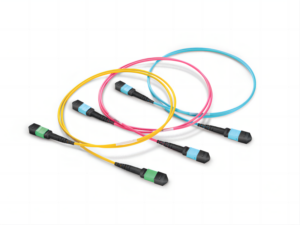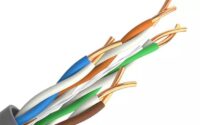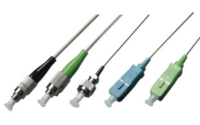Rack and MPO Assembly Procedures in Data Centers

As data centers grow in scale and complexity, efficient infrastructure deployment becomes crucial. Two key components of a high-performance data center are the rack system and the MPO (Multi-fiber Push-On) cabling. Proper assembly of these elements not only ensures stable network performance but also reduces downtime, facilitates maintenance, and supports future scalability.
In this blog, we’ll walk through the standard procedures for installing racks and assembling MPO systems in modern data centers.
Rack Installation Procedures
Site Planning and Layout Design
Before any hardware is installed, detailed planning is essential. Rack placement must consider airflow, power distribution, cable routing, and physical security. Data center layout designs like hot aisle/cold aisle configurations are commonly used to improve cooling efficiency.
Rack Positioning and Securing
Position racks according to the layout design, ensuring even spacing between them.
Secure the racks to the floor and, if necessary, to overhead structures to prevent movement.
Use grounding wires as required to ensure safety and equipment protection.
Labelling and Organization
Label each rack and unit clearly following TIA/EIA or internal naming conventions.
Use cable management accessories such as vertical/horizontal cable organizers, rings, or trays.
MPO Cable Assembly Procedures

MPO connectors are essential for high-density fiber optic networks. They support 12, 24, or even 48 fibers in a single interface, making them ideal for high-speed data transmission in data centers.
Cable Preparation and Inspection
Select MPO cables with the correct fiber count and polarity (Type A, B, or C).
Inspect MPO connectors under a microscope to ensure no contamination or damage.
Clean connectors using proper MPO cleaning tools if necessary.
Routing and Installation
Route MPO trunks from patch panels to equipment (switches, servers, etc.) using pre-planned cable paths.
Avoid bending cables beyond the minimum bend radius and follow structured cabling standards.
Plug MPO connectors into appropriate adapters or transceivers with correct orientation and alignment.
Testing and Documentation
Test each MPO link for insertion loss and return loss using an MPO tester or OTDR.
Record all test results and cable maps for future reference.
Document port assignments and cable labels for quick troubleshooting and upgrades.
Best Practices
Always follow the “Inspect – Clean – Inspect” process before inserting fiber connectors.
Use high-quality components and certified installation tools to ensure long-term reliability.
Plan for scalability: leave space in racks and cable trays for future expansion.
In Conclusion
A well-executed rack and MPO assembly process sets the foundation for a high-performance, scalable, and easily maintainable data center. By following structured procedures and best practices, organizations can ensure optimal uptime and readiness for future network demands.
Whether you are upgrading your current infrastructure or building a new data center, understanding and applying these steps can make a significant difference in efficiency and reliability.
More infromations: Click it
How to Installing and Removing SFP Transceivers:
Step-by-Step Guide for Installing and Removing SFP Transceivers


